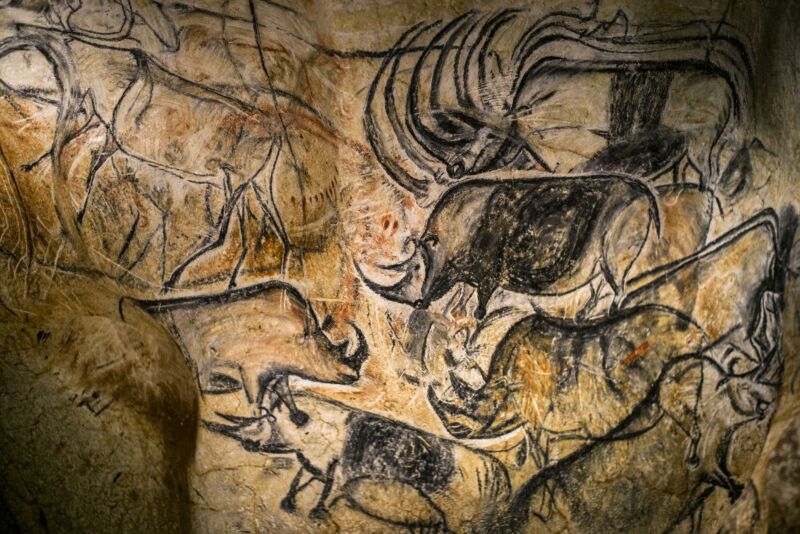Enlarge / Portion of a reproduction of cave paintings in France, showing rhinos (among other species). (credit: JEFF PACHOUD)
For most people, an extinct species is an abstraction, a set of bones they might have seen on display in a museum. For Gennady Boeskorov, they are things he has interacted with directly, studying their fur, their skin, their internal organs—experiencing these animals much as they existed thousands of years ago. Some of the well-preserved Pleistocene animals he has worked with include the mummified remains of woolly mammoths (Mammuthus primigenius), an extinct form of rabbit (Lepus tanaiticus), and cave lion cubs (Panthera spelaea).
His latest paper also makes it clear that woolly rhinoceroses belong on this list. Boeskorov is a senior researcher at the Diamond and Precious Metals Geology Institute, Siberian Branch of the Russian Academy of Sciences, as well as a professor at the North-Eastern Federal University in Yakutsk. This July, he and his colleagues described the relatively recent discovery of three woolly rhinoceros mummies, one of which is new to science, in a paper published in the journal Doklady Earth Sciences.
Woolly rhinos (Coelodonta antiquitatis) were stocky, long-haired, two-horned denizens that inhabited Eurasia during the Pleistocene, a period that includes the most recent glacial expansion. They coexisted with woolly mammoths, placing second on the list of largest animals in this ecosystem (behind their tusked proboscidean coevals), and shared a similar dense coat of hair to protect against the cold.
Read 18 remaining paragraphs | Comments




